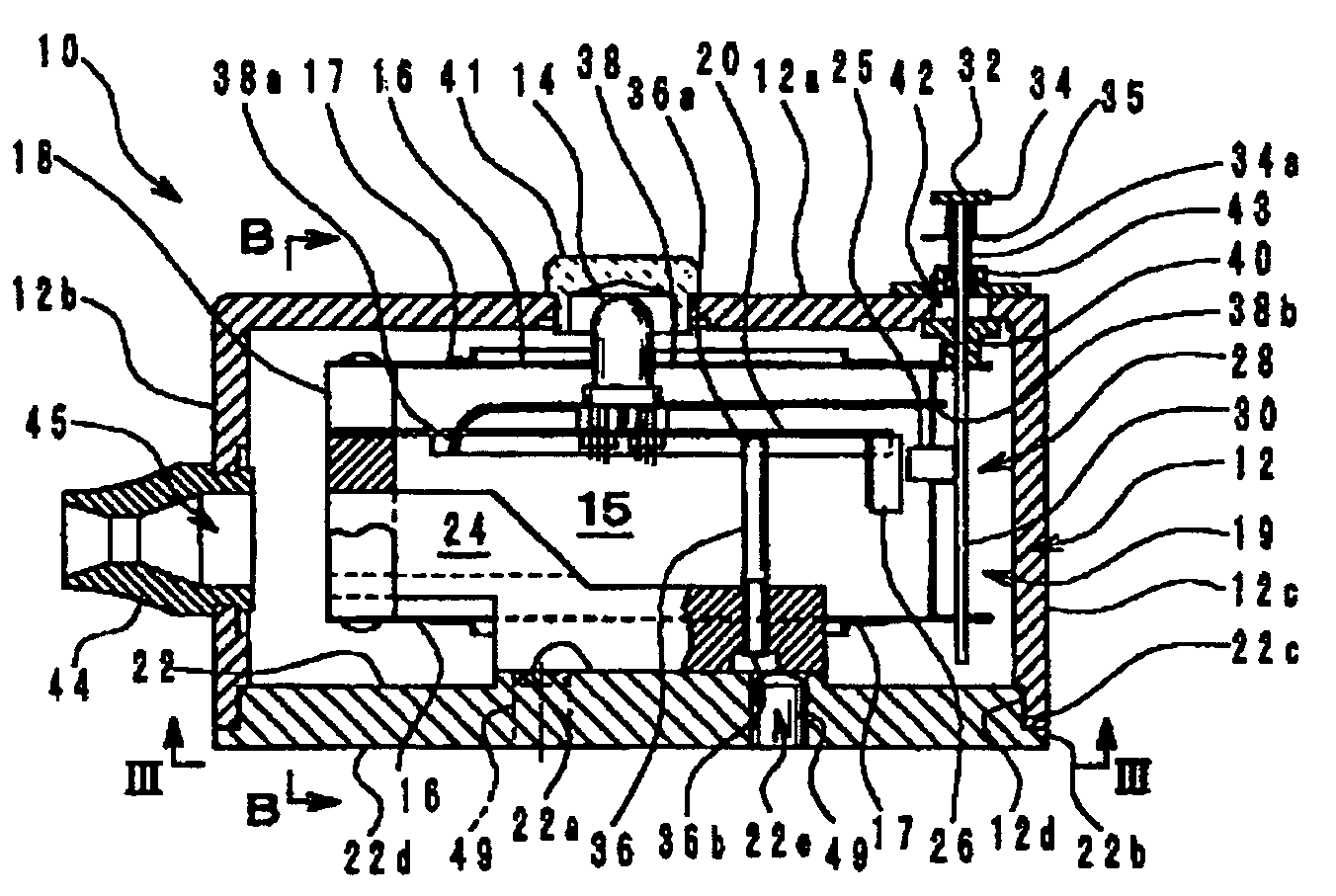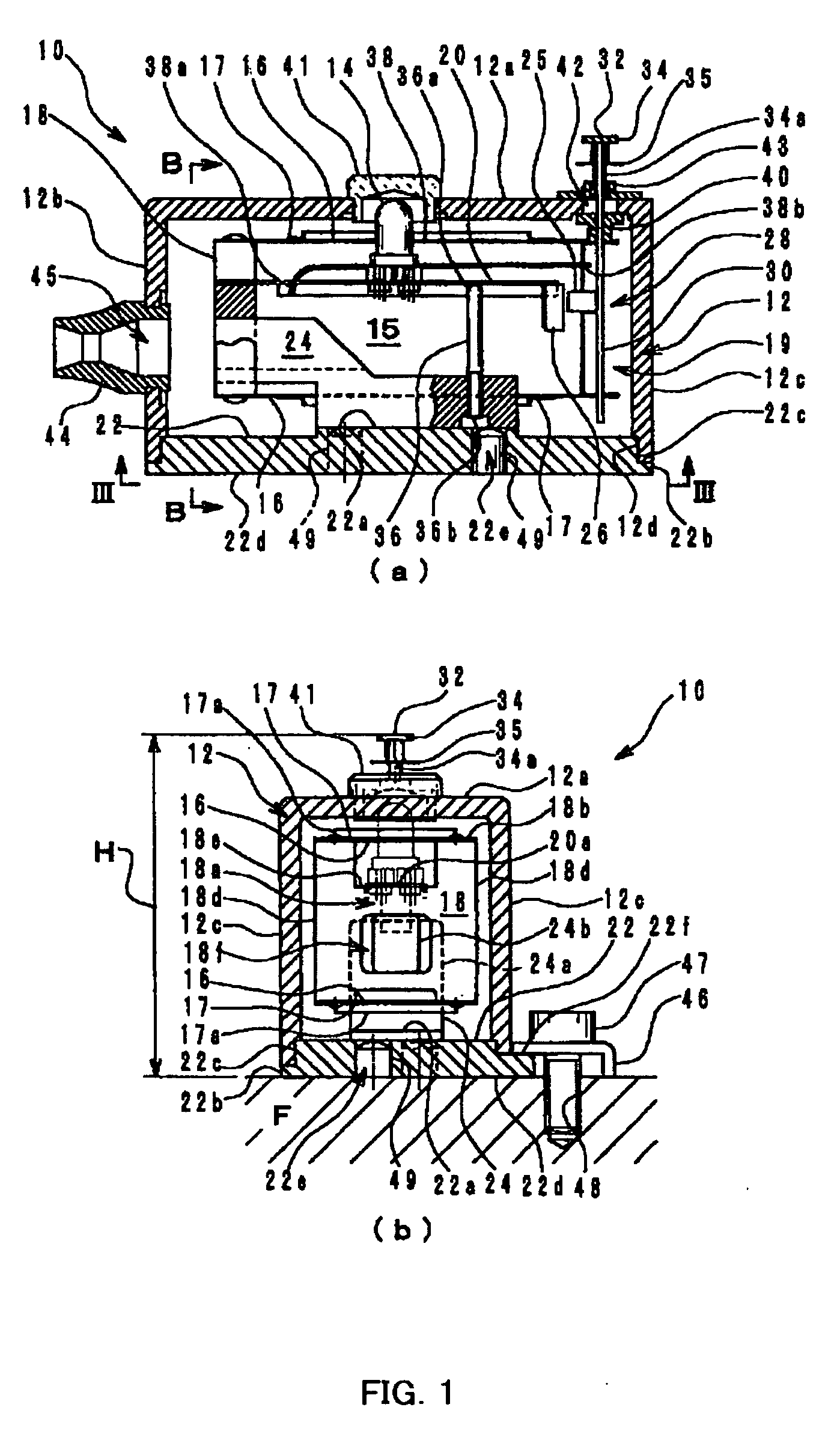Touch sensor
- Summary
- Abstract
- Description
- Claims
- Application Information
AI Technical Summary
Benefits of technology
Problems solved by technology
Method used
Image
Examples
Embodiment Construction
[0046] A preferred embodiment of a touch sensor according to the invention will be now described in detail hereinafter based on the drawings. FIG. 1 shows an embodiment of a touch sensor 10 according to the invention, (a) a side cross-sectional view and (b) a cross-sectional view along line B-B of (a). FIG. 2 is a plan view to illustrate one of two parallel plate springs 16 of the same shape which are constructed mirror-symmetrically opposed to each other having a same geometry, (b) a cross-sectional view along line B-B of (a), and (c) an expanded view of the part of (b) circulated with a sigh c. FIG. 3 is a bottom view along line III-III of FIG. 1(a). FIG. 4 is a perspective view of FIG. 1, parts thereof being disassembled. FIG. 5 is an operational illustration of the touch sensor 10 of FIG. 1, a housing 12 and a signal light 14 being removed. Note that plate thicknesses are all exaggeratedly illustrated in the drawings.
[0047] In FIG. 1, a cantilever mechanism 15 which is a major ...
PUM
 Login to View More
Login to View More Abstract
Description
Claims
Application Information
 Login to View More
Login to View More - R&D
- Intellectual Property
- Life Sciences
- Materials
- Tech Scout
- Unparalleled Data Quality
- Higher Quality Content
- 60% Fewer Hallucinations
Browse by: Latest US Patents, China's latest patents, Technical Efficacy Thesaurus, Application Domain, Technology Topic, Popular Technical Reports.
© 2025 PatSnap. All rights reserved.Legal|Privacy policy|Modern Slavery Act Transparency Statement|Sitemap|About US| Contact US: help@patsnap.com



